Day 1 :
Keynote Forum
Gerd Kaupp
University of Oldenburg, Germany
Keynote: Basic physics disproves the obligatory ISO-14577 standards: A dilemma for all indentation mechanics
Time : 09:00-09:30
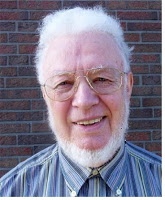
Biography:
Gerd Kaupp studied chemistry at the University of Würzburg, Germany, and was appointed full professorship at the University of Oldenburg in 1982. Since 2005 he is retired member at the University of Oldenburg. He served as guest professor and pursues his scientific interests also with consulting. His expertise is in chemical kinetics, laser photochemistry, waste-free benign productions, solid-state chemistry, reactive milling, mechanochemistry, atomic force microscopy, scanning near-field optical microscopy SNOM, nanoscratching, nanoindentation, bionics, and standardization of nanomechanics. He is keynote speaker in these fields, published numerous scientific papers and books and is inventor of patents in solid-state and environmental chemistry.
Abstract:
Most mechanical properties of materials are deduced from indentation with pyramidal/conical diamond tips. The obligatory ISO-14577 standard iterates hardness (HISO) and elastic modulus (Er-ISO) with triple violation of basic physics (energy law violation, wrong exponent on h, and denying phase transitions under load). Very highload indentation techniques (Vickers, Knoop, Brinell, Rockwell, etc. hardness) are even more empiric and include the same violations. Thus, the normal force (FN) is not proportional with h2, but with h3/2, as is physically founded[4] and experimentally confirmed. The wrong exponent 2 also prevents the detection of initial surface effects (that must be corrected for) and phase transitions under load. While the latter often occur within the 1000 μN range, some require the mN and up to >25 N range, where multiple phase transitions generally occur with the additional risk of macroscopic cracking (for example NaCl at 0.618 mN, 3.34 mN, 2.49 N, 9.12 N, 24.43 N, these without cracking[13]. The way for a physical treatment of indentations has been paved with "Kaupp-plots" (FN = k h3/2) since 1990. The material's penetration resistance k requires the energy-law correction factor of 0.8. But that is still not appreciated by the establishment. And pressure-formation requires work! Pressure has long been used for elastic modulus determinations though. It does not help that the very high-force techniques rely on the diameters of the impression surface such as Vickers, Knoop, Brinell (they are convertible into the depths), or that Rockwell and Shore measure the depth. Problems with cracks are not seen and reported (this does not mean cracks upon unloading for fracture toughness), but different load ranges have to be distinguished and empirical inter-conversion formulas are used. The physically valid Hphys=0.8k/tg2 can now be obtained by linear regression of the loading curve's Kaupp-plot, excluding the three flaws. Indentation moduli Er-phys require energy correction and experimental stiffness dFmax/dh, using simplest arithmetic. Indentation moduli are not the claimed "Young's moduli" and should be directly calculated but not iterated with up to 11 free parameters. All of that is valid for all types of materials and instrumented depth sensing techniques. The dilemma of the ISO standards against physics and thus the woldwide "enforced” iteration of further wrong mechanical properties is detrimental, producing very large size-dependend errors and increasing crack probabilities. Liability problems for disastrous material failures ensue. Textbooks and instrument software must be rewritten, the ISO-14577, a NIST tutorial, and the opposing publications retracted. The physical correctness must be installed for the sake of daily life security. Examples will be discussed. ISO appears slow in changing its standards for complying with physics. I continuously ask them to release an urgent caveat, telling that ISO-14577 will be subject to change for the physical reasons.
Keynote Forum
Masaru Matsuo
Dalian University of Technology, China
Keynote: Mechanical and electric properties of nanofiber - polymer composites under different electric fields
Time : 10:00-10:30
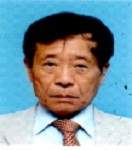
Biography:
Masaru Matsuo has completed his PhD at Kyoto University in Japan and he was a professor of Nara Women’s University. After his retirement, he became a full time professor of Dalian University of Technology in China. Since September 1st 2014, he is a visiting professor of Dalian University of Technology. He has published more than 200 papers in refereed journal articles. He is IUPAC fellow and “Certificate of Membership Award of ACS (July 2015~ July 2018). He received “Award of Society of Fiber Science and Technology of Japan on May 1990, “Paul Flory Polymer Research Prize” on April 2010 and “Certificate of friendship Award of Liaoning Province in China” on September 2011.
Abstract:
Under external vibration, the damage of polymer-filler composites by Joule heat associated with tunneling current is thought to be serious than that by hot air. To elucidate it, the storage modulus for polyethylene (PE)-nickel coated carbon fiber (NiCF) composites and that for aromatic polyimide (PI)-vapor grown carbon fiber (VGCF) composites were measured as a function of frequency by the two heating methods. In common, the storage modulus of PE-NiCF decreased with increasing temperature and this tendency was considerable with decreasing frequency. However, the relative decrease of the modulus by Joule heat was more remarkable than that by hot air. This was due to the fact that the sample damage by Joule heat is associated with an increase in electron transfer in PE matrix at elevated temperature. Probably, it was postulated that electron transfer by tunneling effect between NiCFs caused partial discharge on PE surface and allowed appearance of pits and electron treeing, and finally the growth of the treeing wreaked electron breakdown. Such sample damage indicated that the electric field must be controlled to use as PTC materials like floor heating in winter season. In comparison with PE-NiCF, frequency dependence of the storage modulus for the PI-VGCF composite was not considerable against elevated temperature by Joule heat because of high heat resistance of rigid PI chains. Actually, the distance between adjacent VGCFs was independence of electric field because of no thermal expansion of PI. The phenomenon was analyzed in terms of theoretical calculation for thermal fluctuation-induced tunneling effect. The approach indicated that the increase in current is attributed to an increase in electron transfer area on VGCF surface and is independent of the distance between adjacent VGCFs.
Keynote Forum
Mineo Hiramatsu
Meijo University, Japan
Keynote: Plasma processing for carbon nanostructures
Time : 10:40-11:10
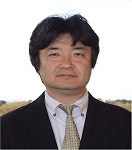
Biography:
Mineo Hiramatsu is a full professor in Department of Electrical and Electronic Engineering and the Director of Research Institute, Meijo University, Japan. He served as the Director of The Japan Society of Applied Physics. His main fields of research are plasma diagnostics and plasma processing for the synthesis of thin films and nanostructured materials. He is an Author of more than 100 scientific papers and Member of organizing and scientific committees of international conferences on plasma chemistry and plasma processing. He is the Fellow of Japan Society of Applied Physics
Abstract:
Carbon nanostructures, namely, graphene-based materials such as carbon nanotube and graphene itself have attracted much attention due to their outstanding properties as well as emerging applications. For the synthesis of diamond and amorphous carbon films, graphene-based materials can be synthesized by several plasma enhanced chemical vapor deposition (PECVD) techniques on heated substrates (600-800ËšC) employing methane and hydrogen mixtures. For example, plane graphene formation can be realized by PECVD on Ni substrate in the remote plasma configuration at relatively low temperatures (~650ËšC). In fact, excess flux of carbon precursors causes supersaturation and ion bombardment induces the nucleation of nanographene, resulting in the formation of vertical nanographene (carbon nanowall, CNW). CNWs are few-layer graphenes standing vertically on a substrate to form a self-supported network of wall structures. The maze-like architecture of CNWs with large-surface-area graphene planes would be useful as electrodes for energy devices, electrochemical and biosensors. Morphology including structure and crystallinity as well as electrical properties of carbon nanostructures should be controlled according to their applications. Plasma
processing has a significant role in fabricating carbon-based materials and achieving their practical use in many areas. We report the current status of the synthesis of plane graphene and vertical graphene using PECVD, and focus on the control of the CNW structures during the growth processes as well as post treatment to be used as platform of the electrochemical and bio applications.
Keynote Forum
Haruo Sugi
Teikyo University School of Medicine, Japan
Keynote: Myosin heads in muscle can sense presence or absence of actin filaments to decide the direction of ATP-induced movement
Time : 11:40-12:10
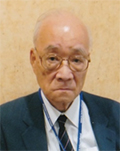
Biography:
Haruo Sugi completed his postgraduate from the University of Tokyo and worked at the University of Tokyo Medical School, Columbia University and the National Institutes of Health. He was Professor and Chairman in the Department of Physiology, Teikyo University Medical School from 1973 to 2004 when he became Emeritus Professor. He was chairman of Muscle Commission in the International Union of Physiological Sciences from 1996 to 2006.
Abstract:
Although almost 70 years have passed since the monumental discovery of Huxley and Hanson; that muscle contraction results from relative sliding between actin and myosin filaments, which in turn caused by cyclic attachment and detachment between myosin heads extending from myosin filaments and the corresponding myosin binding sites in actin filaments. The performance of myosin heads still remains to be a matter for debate and speculation. The main reason why the research work on the myosin head performance is retarded is asynchronous nature of myosin head movement; experimental methods including muscle mechanics, chemical probes and time resolved X-ray diffraction can detect only averaged myosin head movement with ambiguous results. To visualize and record myosin head movement coupled with ATP hydrolysis, we developed the gas environmental chamber (EC), which enabled us to record ATP induced power and recovery strokes in individual myosin heads in hydrated, living myosin filaments in the presence or absence of actin filaments. Our results obtained from experiments using the EC have revealed the fundamental properties of myosin heads in muscle, which can be summarized as follows: In the absence of actin filaments, myosin heads fluctuate around the definite neutral position; on binding with applied ATP, myosin heads take the form of M-ADP-Pi (chargedup state) to perform recovery stroke in the direction opposite to power stroke; after exhaustion of ATP, myosin heads return to the neutral position; in the presence of actin filaments, myosin heads bind with applied ATP to take the form of M-ADP-Pi (charged-up state) to perform power stroke while attached to actin filaments; after exhaustion of ATP, myosin heads return to the neutral position. These results show that myosin heads can sense presence or absence of actin filaments and decide the direction of ATP induced movement without being guided by actin filaments.
Keynote Forum
A D Levin
All-Russian Research Institute for Optical and Physical Measurements, Russia
Keynote: Optical nanosensors based on light scattering: Physical principles and applications for medical diagnostics and food control
Time : 12:10-12:40
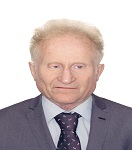
Biography:
Alexander Levin is Leading Research Scientist of the All-Russian Research Institute for Optical and Physical Measurements. He received PhD in Experimental Physics in 1981, he worked in various scientific and managerial positions in the field of laser methods of diagnostic, physical optics, developing of analytical spectral instruments for atomic and molecular spectroscopy, photon correlation spectroscopy. Since 2007 he is Doctor of Engineering Science, head of the scientific group, developing optical methods and instruments for nanoparticles characterization. Dr. Levin currently manages the projects on optical nanosensors and development of reference materials for fluorescence. He is the author and coauthor of the 3 monographs, over 80 scientific publications and 10 inventions. He has given many lectures at various national and international scientific conferences.
Abstract:
Optical sensors based on size and shape change the functionalized nanoparticles (NP) due to interaction with the analyte are considered. NP’s are functionalized by antibodies and in the case of presence of the specific analyte in the solution aggregation or shell formation process occurs. The change in particle size caused by these processes is controlled using dynamic light scattering (DLS) or resonance light scattering (RLS) spectroscopy. Both optical methods are available and non-invasive. Such techniques have several advantages in comparison with the conventional immunechemical analysis–they are washing-free and time-saving. For medical applications nanoparticles sizing in blood plasma is required, for this purpose depolarized light scattering helps to distinguish light scattering of conjugates from the scattering of plasma proteins. The model describing the kinetics of functionalized NP size increasing was developed and applied for the optimization of nanosensor parameters (material, size, shape and concentration of NP). Experimental results on DLS based nanosensor for the disease markers and food contaminants are presented. New DLS instrument and data processing algorithms developed for applications with optical nanosensor gives the additional opportunities– non-spherical NP sizing using multi-polarization DLS, estimation of NP number concentration and, subtraction of the background NP size distribution.
Keynote Forum
Yongyi Zhang
Chinese Academy of Sciences, China
Keynote: Carbon nanotube and graphene fibers: Synthesis, properties and functional applications
Time : 13:30-14:00
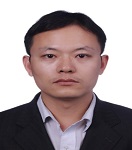
Biography:
Yongyi Zhang received his BS degree in Chemistry from Beijing Normal University in 2002 in China and PhD in Physical Chemistry from Peking University in China in 2008. He worked as a Post Doc. in University of Michigan, Ann Arbor and University of South Dakota in USA from 2008 to 2011. Dr. Zhang has been appointed as an associate Professor since 2011 and became a Professor at the Advanced Material Department at Suzhou Institute of Nano-Tech and Nano-Bionics, Chinese Academy of Sciences since 2017. He is also the director of the Nanomaterials Department at Suzhou Institute of Nano-Tech and Nano-Bionics, Nanchang, Chinese Academy of Sciences since 2017. His interests include the synthesis, assembly, properties and applications of carbon nanotube and graphene fibers. He has published over 40 papers and applied over 40 patents.
Abstract:
Due to the unique structures and supreme mechanical, electrical and thermal properties, carbon nanotube and graphene are ideal building blocks for super fibers which own great potential applications in many fields. However, the lack of effective assembles technique makes it is of great challenges in obtaining strong nanocarbon fibers with multifunctional properties and applications. Here we will talk about our concerned work on the synthesis, assembly and mechanical properties of carbon nanotube and graphene fibers, and their applications in fields such as EMI, energy will be included as well.
Keynote Forum
Jerome Tignon
Laboratoire Pierre Aigrain, Ecole normale supérieure, France
Keynote: Terahertz (THz) short pulse generation in quantum cascade lasers
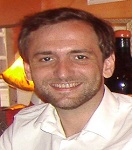
Biography:
Jerome Tignon has completed his PhD at École Normale Supérieure (ENS/SU) in Paris in 1996 and his Postdoctoral studies at Lawrence Berkeley National Lab (LBNL Berkeley, CA) in the Chemla group (1996-98). He is currently the Director of the Laboratoire Pierre Aigrain in the Physics Department of Ecole Normale Superieure in Paris. He has published more than 150 papers, given over 50 invited talks and will be the chairman of IRMMW-THz in Paris (2019).
Abstract:
In the terahertz (THz) range, a semiconductor based technology for intense and ultrashort pulse generation has yet to be realized. Although THz quantum cascade lasers (QCLs) are a foundational semiconductor laser in the THz range, to date, the generation of stable and ultrashort pulses from QCLs has proven to be difficult. These devices, first realized in 2002, permit the frequency, and bandwidth to be entirely engineered. Active mode locking, where
the device is electrically modulated at its’ roundtrip, has been extensively applied but the pulses generated so far have been limited to the range of 10ps to 20ps, despite several years of research effort. Although THz QCLs with extremely large gain bandwidths have been realized leading to impressive developments in frequency comb generation, this has not translated directly into the formation of stable ultra-short pulses in the THz range. Here, we resolve the THz QCL short pulse bottleneck through an on-chip geometry that permits the GDD of the QCL to be compensated, leading to considerably shorter pulses when the QCL is active mode locked. This is realized through the monolithic integration of a small resonator at one end of a 2.5 THz QCL cavity, based on a Gires-Tournois Interferometer (GTI) approach that adds an opposite dispersion to that of the material. This directly results in pulse durations as shorts as 4 ps, from 16 ps with a standard QCL geometry.
- Nanotechnology
Location: 1
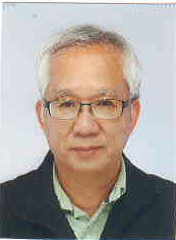
Chair
Myung Chul Chang
Kunsan National University, South Korea
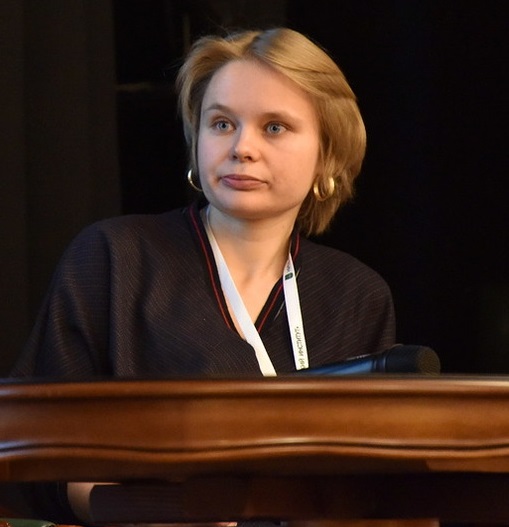
Co-Chair
Anna Antsiferova
National Research Center ‘Kurchatov Institute’, Russia
Session Introduction
Kolan Madhav Reddy
Shanghai Jiao Tong University, China
Title: Nanoscale deformation characterization of light-weight ceramics

Biography:
Kolan Madhav Reddy has completed his PhD in Materials Science and Engineering at Tohoku University, Japan and Postdoctoral research at Johns Hopkins
University, USA. He is currently an Associate Professor in School of Materials and Engineering at Shanghai Jiao Tong University, China. He has authored
and co-authored more than 25 peer-reviewed papers and filed a patent.
Abstract:
Lightweight ceramics often composes of oxides, nitrides, carbides and borides have recently gained technological
importance or even still at the development stage with regard to future applications. Therefore experimental
observations of the atomic structure and their deformation mechanisms of lightweight ceramics are of extreme
importance in understanding and tailoring the materials properties. In this presentation, author will demonstrate the
atomic imaging of boron-rich solids (i.e., B4C and B6O) using newly developed annular bright field scanning transmission
electron microscopy (ABF-STEM) technique. The atomistic observations upon deformation provide the direct evidence
for the intragranular amorphous shear bands in both these brittle ceramics. To reduce the brittleness, nano-crystalline
B4C (n-B4C) microstructure with a homogenous distribution of nano-sized pores and amorphous carbon at grain
boundaries (GBs) was synthesized at relatively low temperatures. Transmission electron microscopy (TEM) of n-B4C
reveals that the unusual nanosize effect arises from the deformation reduced elimination of nano-porosity mediated
by grain boundary sliding with the assistance of the soft boundary phases. Finally, our recent observations combined
with computer simulations reveals GB sliding leads to the amorphous band formation at pre-distorted icosahedral GB
regions with initiation of cavitation within the amorphous bands. These theoretical and experimental results provide an
atomistic explanation for the influence of GBs on the deformation behavior of nano-crystalline ceramics.
